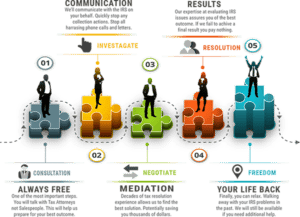Let's Solve It
What is a Bank Levy?
A Bank Levy is used when a delinquent taxpayer ignores notices to pay past due taxes
A Bank Levy is when the IRS freezes the money in your bank or financial account. It attaches to the money in the account at that moment. The money is ‘frozen’, usually for 21 days and then released to the IRS. Once the money is released it is very difficult to recover. And, be prepared for your bank to charge you $135 for the privilege of having your account levied.
A Bank Levy is used when a delinquent taxpayer ignores notices to pay past due taxes. Once the IRS sends a ‘notice of intent to levy’ the next move is a bank levy, or wage garnishment. You have 30-days to file an appeal to the final notice. A Bank Levy is an extreme action to get your attention. And it works. Releasing a bank levy can be accomplished a few different ways. One way is to show your money is needed for living expenses, or to maintain a business. The form to use can be found at: https://www.irs.gov/pub/irs-pdf/f433a.pdf.
Here are a few things:
Contact the IRS and negotiate something less severe. You need to have a breakdown for income and all your expenses before you call, and they are going to ask you where you work, where you bank and what assets you have.
File bankruptcy, but remember there are limitations on extinguishing what you owe to IRS through bankruptcy.
Pay them.
Dispute the amount you owe.
Ask for time to get your financial affairs in order e.g. file past returns etc.
Contact a tax specialist or resolution firm with experience in the process.
That is a difficult question and some of the considerations are:
Your degree of knowledge.
How much you owe.
Is there a Revenue Officer involved.
Is it personal or business.
Have you had garnishments or levies before.
Are all your tax returns filed.
Your income.
Have you defaulted on a payment plan prior.
To give you an idea whether working with the IRS on your own is a good idea; statistics show that an offer in compromise is accepted 14% of the time when submitted by the taxpayer, and about 60% when submitted by a licensed professional.
Dealing with the IRS is part art and part science. The science comes in by studying the guidelines and utilizing them to your best advantage. However, like any legal or administrative process there is interpretation and room for negotiation. That is where the art comes in.

